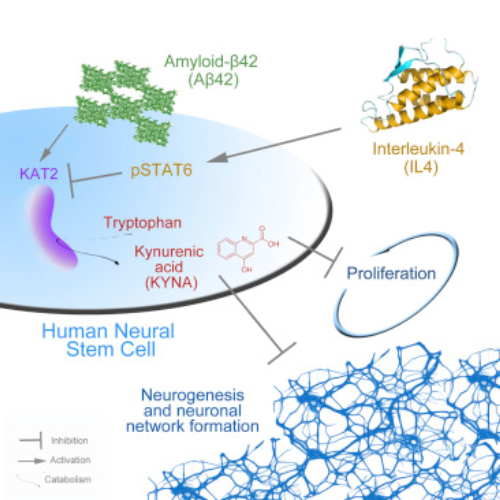3D Culture Method for Alzheimer's Disease Modeling Reveals Interleukin-4 Rescues Aβ42-Induced Loss of Human Neural Stem Cell Plasticity.
Neural stem cells (NSCs) constitute an endogenous reservoir for neurons that could potentially be harnessed for regenerative therapies in disease contexts such as neurodegeneration. However, in Alzheimer's disease (AD), NSCs lose plasticity and thus possible regenerative capacity. We investigate how NSCs lose their plasticity in AD by using starPEG-heparin-based hydrogels to establish a reductionist 3D cell-instructive neuro-microenvironment that promotes the proliferative and neurogenic ability of primary and induced human NSCs. We find that administration of AD-associated Amyloid-β42 causes classical neuropathology and hampers NSC plasticity by inducing kynurenic acid (KYNA) production. Interleukin-4 restores NSC proliferative and neurogenic ability by suppressing the KYNA-producing enzyme Kynurenine aminotransferase (KAT2), which is upregulated in APP/PS1dE9 mouse model of AD and in postmortem human AD brains. Thus, our culture system enables a reductionist investigation of regulation of human NSC plasticity for the identification of potential therapeutic targets for intervention in AD.

- Dev Cell. 2018 Jul 2;46(1):85-101
- 2018
- Neurobiology
- 29974866
- PubMed
Enabled by:
